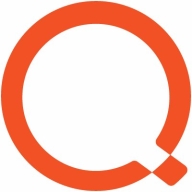

IDERA SQL Diagnostic Manager for SQL Server and Quest Foglight for Databases are two strong contenders in the database performance monitoring market. IDERA is noted for its competitive pricing and strong support, while Quest Foglight is recognized for its comprehensive feature set, making it a worthy investment for in-depth analytics.
Features: IDERA SQL Diagnostic Manager for SQL Server excels with user-friendly monitoring and alerting, customizable reporting, and the ability to identify bottlenecks and slow queries. Quest Foglight for Databases stands out with advanced SQL optimization and cross-platform support, including Oracle and MySQL, as well as its robust real-time activity tracking and change tracking capabilities.
Room for Improvement: IDERA could enhance its analytics capabilities and expand its support for various database platforms. It may also benefit from more in-depth real-time diagnostics. Quest Foglight can improve by simplifying its complex setup process and enhancing the user interface for greater ease of use. Expanding its integration with newer database technologies could also be beneficial.
Ease of Deployment and Customer Service: IDERA SQL Diagnostic Manager offers straightforward installation and both local and remote deployment options, along with responsive, personalized support. Quest Foglight, while requiring a more complex setup, provides thorough documentation and scalable architecture. Both offer solid customer support, but IDERA's streamlined deployment provides an edge in convenience.
Pricing and ROI: IDERA SQL Diagnostic Manager is attractive for budget-conscious buyers with its lower initial setup cost and quick ROI from improved performance monitoring. Quest Foglight demands a higher upfront investment but promises significant ROI for those needing its advanced capabilities, positioning it as a long-term strategic choice.

SQL Diagnostic Manager for SQL Server helps database administrators to find and fix SQL Server performance problems in physical, virtual, and cloud environments. Unlike its competition, it provides effective scalability, advanced SQL query analysis and optimization, prescriptive analysis with corrective SQL scripts, powerful automated alert responses, broad PowerShell integration, complete customization, and extensive support for current and legacy SQL Server and Windows.
Foglight identifies and resolves performance issues across your applications, databases and virtual environments. The Foglight family of products easily integrates with your existing tools, so you can monitor and analyze data from almost any source across your infrastructure and view it through a single interface with our customizable, unified monitoring platform
We monitor all Database Development and Management reviews to prevent fraudulent reviews and keep review quality high. We do not post reviews by company employees or direct competitors. We validate each review for authenticity via cross-reference with LinkedIn, and personal follow-up with the reviewer when necessary.